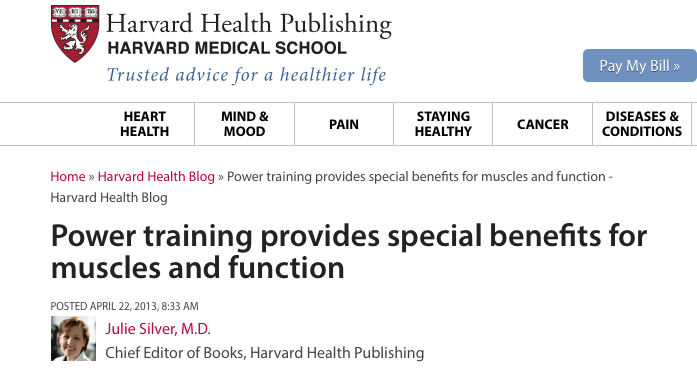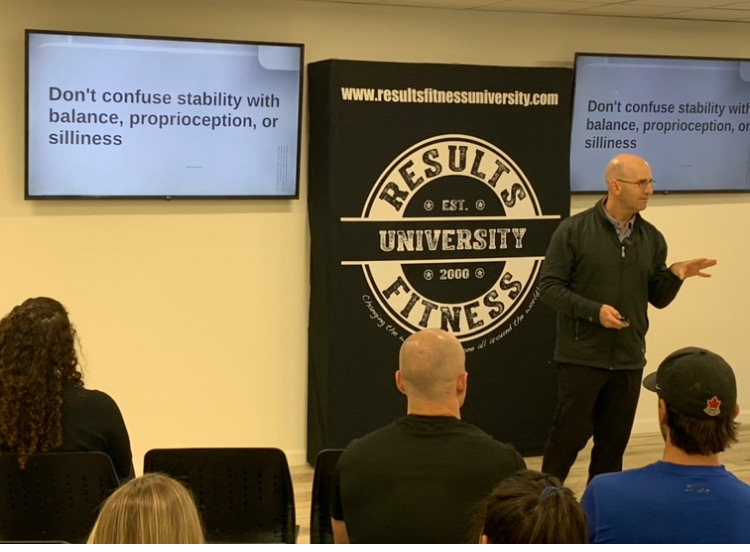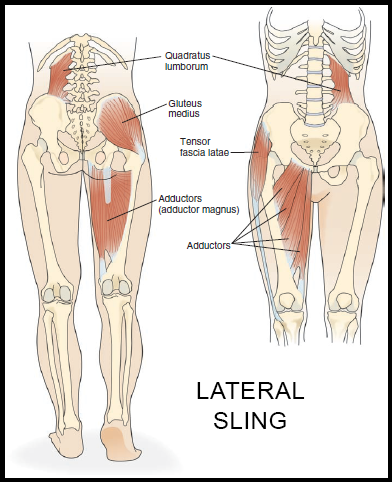3 Unique Kettlebell Benefits
2020-02-15
If I had any hesitation in creating our Progressive Kettlebell Movement Certification (PKM) it was that people would be quick to dismiss the idea of ANOTHER kettlebell program. In all honesty, I completely understand the cynicism that would come over most. It appears like every company has their own kettlebell program nowadays. Seeing what is out there ends up being a lot of recycled information combined with some novel exercises. Viewing such a landscape of kettlebell training many wonder if people would be open to a real coaching program.
You see, when I first got into kettlebells back in 2002, what sold me wasn’t some former Eastern European mystique. It wasn’t trying to be “hardcore” or anything like that. It WAS the fact that it opened so many solutions to helping people understand better movement and build qualities of functional fitness that weren’t being implemented in mainstream fitness.
Concepts like power and multi-planar training, for example, were held just for the elite athletes. When kettlebells came back into mainstream fitness in 2001, the fact we could not only teach these concepts to everyone, but in better ways is what got me so excited about kettlebell training for myself and my clients. Funny enough, I was renting from a big gym at the time, lugging my kettlebells from my Saturn (yes, I had a Saturn car and loved it! However, the kettlebells made it more into a low rider LOL) to the gym I was known as the “crazy kettlebell guy.” The results and experience I was giving my clients spoke for themselves and pretty soon people were seeking me out all over Arizona and further to teach them this “kettlebell thing”.

I was so excited about what kettlebells could do I was writing articles for Bodybuilding.com back in 2002!
What was it EXACTLY that I learned over the years that made me excited to create PKM? After all, our initial educational programs actually involved kettlebells! I could think of 3 great concepts that make what we teach really achieve the potential of what kettlebells can offer!
Power Training
While in college I was pretty sure I was going to go into university strength & conditioning as a career. After interning for the university and speaking to some friends that were doing it, I decided that it wasn’t for me. I wanted something more stable in the fitness arena (excuse the extreme sarcasm here;). While I wasn’t going to be working with athletes, I did know that I wanted to bring the concepts of better movement, stability, real world strength, and power to people that would find it improve the quality of their life.
It surprises most people to hear, but the FIRST quality we lose as we age is power! I know you don’t think of grandma and grandpa sprinting up hills or doing box jumps, but the reason elderly people are at such high risk for falls is the inability to decelerate themselves.

If Harvard medical school is talking about power training maybe we should give it more thought to how we implement it.
Of course I think the tougher conversation isn’t is power training good, but how we introduce it safely to people. The kettlebell can be a great vehicle in which to do so! While many focus on the kettlebell swing for power, I think that is FAR more advanced than most people realize as the lever arm of the swing makes for HUGE loads both on the way up and down. It doesn’t have the same “sexy” sales pitch to coaches, but the kettlebell clean is one of my absolutely favorite ways to help people learn how to develop power.
You might think, “oh no, my clients HATE when the kettlebell is WHACKING the wrists!” I agree, NOTHING can turn off clients from wanting to use a tool than having pain associated with it. Heck, most people think exercise has to hurt, you don’t need to give them an implement that PROVES it! However, the solution comes in having better progressions. Instead of giving you some super secret kettlebell exercises, PKM is more about a system of coaching progressions that allow you to learn as you also train (nice idea right?). Below is an example with the clean.
https://www.instagram.com/p/BmQaeSalERD/
Why do people struggle SO much with cleans and swings? Well, they don’t take the time to use proper progression on the clean and they introduce the swing WAY too early and people don’t know how to absorb force. It isn’t the exercise, but knowing where they all fit into teaching.
Better Core Stability
People often assume if you use kettlebells that your training both becomes more “functional” and magically improves “core stability”. I use quotations because people use these terms don’t often realize what they REALLY mean! NO tool is inherently functional, it is ONLY the intent you put behind them. When we are talking about building better core stability we are often referring to teaching “bracing” and proximal stability that gives us better movement and strength. The kettlebell CAN be a great tool in both regards, but ONLY if we do so with the right intent.
I’m sure some are wondering if I have given up on the Ultimate Sandbag, but my two favorite tools are the USB and kettlebells. I don’t think one is better than the other, but together they are pretty phenomenal. Some people wonder how come I don’t do barbell work anymore, it is because what these tools can teach in strength, stability, and mobility. Let’s look at the following example…
https://www.instagram.com/p/Be-l8iIF7X5/
Kettlebell squats are right up there with our USB squats and you will see later how we systemize them. In every day life and sport, our legs can only produce as much force as our core can stabilize our pelvis. Therefore, combining the two working better together is really key to making what we do in the gym come alive outside of it! It isn’t just grabbing some kettlebells and squatting though as you see in the video above, we want to be very deliberate about HOW we use the kettlebells to create a proper “plank” that trains our legs and core at the same time.
Same holds true for our kettlebell single leg deadlifts. Many times I see these mistakes…
-Loading the same side: Our body works in opposites so it makes MORE sense to load the opposite arm as the stance leg.
-Starting with one kettlebell instead of two: This is a common trap in only thinking about loading! When I hold two kettlebells I can create more tension/stability than with one. A single kettlebell requires me to have more reactive strength which beginners do NOT have nearly as much of yet.
-Allowing the arm to rotate: How we grip a weight is really important! If we allow the arm to turn we lose the connection of the lats to our core and glutes! Squeezing the kettlebell handle and keeping our arm in a neutral position allows us to build greater success!

Multi-Planar Strength
I get it, probably no one has come to you wanting to improve their multi-planar strength, but they should! Really multi-planar training is what people REALLY mean when they say “stability training”. Stability isn’t about being wobbly, it IS what performance expert, Dr. Brandon Marcello explains as motor control and needs to be multi-planar.


We move about 3 planes of motion, while some people know this, the majority of them have no idea how to program and progress the planes of motion (this is actually my presentation for many national conferences this year;). Sagittal plane (up and down, back and forth) is our most stable plane, Frontal (side to side) is less stable, and Transverse (rotation) is the most unstable. The challenging concept is that I can move through these planes or I can resist them. One big reason we use the half kneeling position to teach how to properly press overhead is because it forces the feet to press down which stabilizes the core and makes our shoulders stronger and more stable. In doing so, we are actually RESISTING lateral motion and using many chains of muscles that are designed to do this very thing!

What kettlebells can help us do is AMPLIFY these concepts and create better progression. For example, you will see physical therapist, Jessica Bento create stability with the band first while she presses the kettlebell overhead. Then we incrementally take away some of that stability and make her body more reflexive. We don’t want to become overly reliant on tension, we want our body to know on its own how and when to create stability and strength.
https://www.instagram.com/p/B5-Y8V1HJNK/
These 3 concepts can be even discussed in MUCH greater depth as we also add in other unique benefits of the kettlebell. However, I wanted to prove to you that we weren’t just hoping on some bandwagon. This is something that for almost 20 years I have tested, refined, and tried to find the best ways in order to create greater success. As I was talking to a well known colleague recently about training, we were talking about the fact that we can’t always just add more to a training program. When you add something, that means you take time away from something else. Much of what makes a workout program good or not is what we do but also chose not to do. Kettlebells offer so many incredible benefits that if we use them with the right intent we can feel confident we are setting up people and ourselves for success. I hope you see PKM not just as a great kettlebell program, but something that really shows our passion for helping people find the best and most thoughtful ways to train!
Today is the LAST day to get 25% off PKM and a FREE 18 pound kettlebell with code “25pkm” HERE

© 2025 Ultimate Sandbag Training. Site by Jennifer Web Design.







